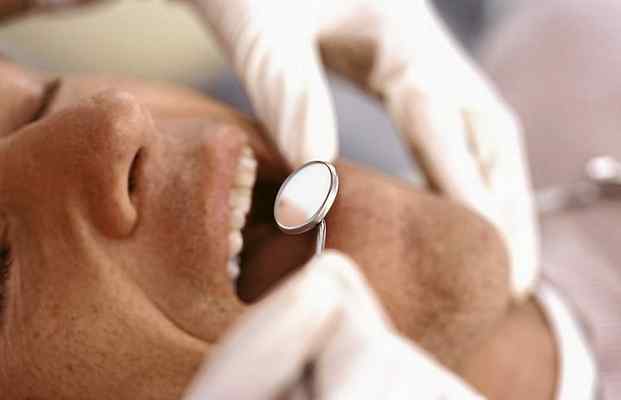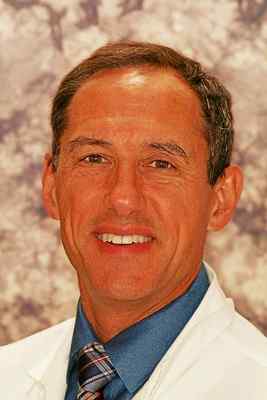Field of dentistry becomes more involved in sleep apnea identification
By Jessica Wendt | POSTED: 02/09/17, 9:42 AM EST | DailyTribune.com
 Even though a dentist cannot diagnose sleep apnea, he or she may note some of the telltale signs and send you in the direction of a sleep medicine specialist. Photo via Metro Creative Connection
Even though a dentist cannot diagnose sleep apnea, he or she may note some of the telltale signs and send you in the direction of a sleep medicine specialist. Photo via Metro Creative Connection
 The story usually goes like this: the husband is making monster noises out of his nose and mouth, the wife hits him multiple times to change positions and then finally the husband ends up on the couch. What is the culprit? Snoring.
The story usually goes like this: the husband is making monster noises out of his nose and mouth, the wife hits him multiple times to change positions and then finally the husband ends up on the couch. What is the culprit? Snoring.
Twenty-five percent of normal adults snore habitually, and at least 45 percent snore at least occasionally. According to the American Academy of Otolaryngology-Head and Neck Surgery (AAO-HNS), “The noisy sounds of snoring occur when there is an obstruction to the free flow of air through the passages at the back of the mouth and nose. This area is the collapsible part of the airway where the tongue and upper throat meet the soft palate and uvula. Snoring occurs when these structures strike each other and vibrate during breathing.”
Snoring can be more than just a noisy nuisance; it can indicate a more serious problem of obstructed breathing.
Sleep apnea is a disorder that occurs when a person’s breathing is halted during sleep. There are two types of sleep apnea: obstructive sleep apnea and central sleep apnea. Central sleep apnea is where the brain does not signal the muscles to breathe. Obstructive sleep apnea is caused by a blockage of the airway.
The AAO-HNS states that OSA is characterized by multiple incidents of breathing pauses greater than 10 seconds at a time, due to upper airway narrowing or collapse. This can happen anywhere from 30 to 300 times per night. This leads to lower amounts of oxygen in the blood, which in turn results in the heart working harder. Those with sleep apnea feel poorly rested due to the constant disruptions in their sleep cycle.
Anyone of any age, even children, can be affected by sleep apnea. According to WebMD, risk factors for sleep apnea include: those of male gender; being overweight; being 40 years of age or older; having a large neck size; having large tonsils or tongue; gastroesophageal reflux or GERD; nasal obstruction due to allergies or deviated septum; and having a family history of sleep apnea. Some of the common symptoms of sleep apnea are loud snoring, waking up with a choking or gasping sensation, very sore or dry throat, and lack of energy. Untreated sleep apnea can lead to high blood pressure, stroke, heart failure, heart attacks, diabetes, depression, headaches, and worsening of ADHD.
Believe it or not, the field of dentistry is becoming more involved in sleep apnea. The Academy of General Dentistry has noted that 18 million Americans suffer from sleep apnea to some degree. Even though a dentist cannot diagnose sleep apnea, he or she may note some of the telltale signs and send you in the direction of a sleep medicine specialist. The dentist will be analyzing the medical and dental history forms to determine if the patient has any sleep apnea risk factors and will ask questions about snoring and sleep habits. Also, the dentist will be assessing the patient’s bite, tongue size and tonsil size and checking for acid erosion on teeth.
The sleep doctor will have the patient go through a sleep study either at a home or in a hospital setting. If the sleep doctor in fact diagnoses sleep apnea, the patient may wind up back at the dentist office for treatment for the sleep apnea.
First, the patient must use a CPAP machine for 30 days. A CPAP stands for continuous positive airway pressure, and it is the gold standard treatment for sleep apnea. With a CPAP, a mask is worn over the mouth and/or nose while you sleep, and a machine delivers a continuous flow of air into the nose to keep the airway open and breathing regular.
Even though the CPAP is the most common form of treatment, many patients find it difficult to comply with wearing a mask on their face every single night.
This is where the dentist comes in. Another popular treatment for sleep apnea is an oral sleep appliance. The American Academy of Dental Sleep Medicine believes that a custom-fit oral sleep appliance can improve your sleep, restore your alertness and revitalize your health. This appliance is worn only when sleeping, and it fits like a sports mouth guard or an orthodontic retainer. It keeps the jaw in a forward position to help maintain an open airway.
Dental devices have been shown to control sleep apnea long term, and people are more likely to use their appliances consistently over their CPAP. However, there are some potential drawbacks with using the device such as altered bite, movement of teeth, pain in the jaw joint, dry lips, and excessive salivation.
There are many ways to treat sleep apnea, and a sleep doctor will help to find the best option for each individual. Some people may end up having surgery, while others get the best outcome from using an oral sleep appliance. Chances are many people wouldn’t think their dentists could help them sleep better, but they can.
To learn more, visit our website at thegentledentist.com, mail us at Ask the Gentle Dentist, 15055 22 Mile Road, Shelby Township, MI 40315 or call us at 586-247-3500.
Jessica Wendt is a registered dental hygienist.




